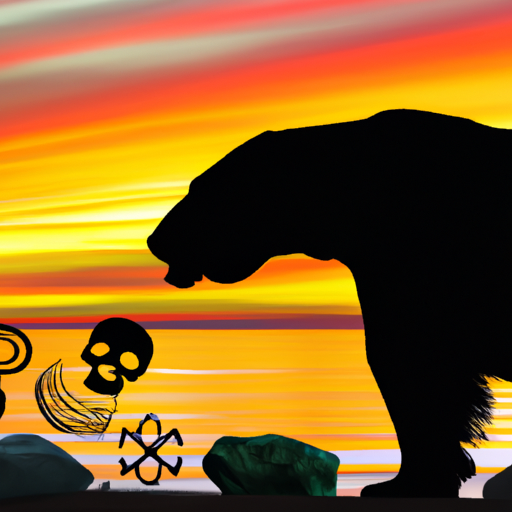 Introduction:
Introduction:
The extinction of animal species is an unfortunate reality that has occurred throughout Earth’s history. However, in recent times, the rate at which animals are becoming extinct has accelerated significantly due to human activities and environmental changes. This article aims to provide a comprehensive and detailed examination of the various causes and processes that contribute to the extinction of animal species.
1. Habitat Loss and Fragmentation:
One of the primary drivers of animal extinction is habitat loss and fragmentation caused by human activities such as deforestation, urbanization, and agricultural expansion. As natural habitats shrink or become fragmented, animals lose their homes, access to resources, and face increased competition, making survival challenging.
2. Climate Change:
Rapid climate change resulting from human-induced factors, such as greenhouse gas emissions, poses a severe threat to animal species worldwide. Rising temperatures, altered precipitation patterns, and extreme weather events disrupt ecosystems, causing habitat degradation and disrupting the delicate balance of biodiversity.
3. Pollution and Contamination:
Pollution, both chemical and plastic, is a significant factor leading to animal extinction. Industrial pollutants, agricultural runoff, and plastic waste contaminate water bodies and land, affecting ecosystems and harming animals directly or indirectly through bioaccumulation or ingestion of toxic substances.
4. Overexploitation and Overhunting:
Excessive hunting, fishing, and poaching for commercial purposes or traditional practices have pushed many animal species to the brink of extinction. Examples include the illegal ivory trade leading to the decline of elephants and the overfishing of certain marine species, threatening marine ecosystems’ stability.
5. Invasive Species:
The introduction of non-native species into new environments can have devastating consequences for local fauna. Invasive species often outcompete native animals for resources, prey on them, transmit diseases, or alter ecosystems, leading to the decline or extinction of vulnerable species.
6. Disease and Epidemics:
Emerging diseases and epidemics, such as the chytrid fungus affecting amphibians or white-nose syndrome in bats, have ravaged numerous animal populations. These diseases can spread rapidly, causing mass mortalities and leading to local or global extinctions.
7. Genetic Factors and Inbreeding:
Genetic factors can contribute to species vulnerability and eventually extinction. Inbreeding depression, a reduction in fitness due to the accumulation of harmful genetic traits, can lead to reduced reproductive success and increased susceptibility to diseases and environmental changes.
8. Slow Reproduction Rates:
Certain animal species have naturally slow reproduction rates, making them more susceptible to extinction. When combined with other threats, such as habitat loss or pollution, these species struggle to recover their populations, exacerbating the risk of extinction.
9. Natural Disasters:
While natural disasters like volcanic eruptions, earthquakes, and hurricanes are not directly caused by human activities, they can have catastrophic effects on animal populations. These events can result in habitat destruction, food scarcity, and increased predation, significantly impacting vulnerable species.
10. Lack of Conservation Efforts:
Insufficient conservation measures, including lack of protected areas, inadequate monitoring, and weak legislation, contribute to the decline and disappearance of animal species. Limited resources and political will hinder effective conservation efforts, leaving many species without the necessary safeguards.
Conclusion:
The extinction of animal species is a complex issue influenced by a combination of interrelated factors. While natural processes have historically caused extinctions, human activities have significantly accelerated the rate at which species are disappearing. Recognizing the causes and processes behind animal extinction is essential for developing effective conservation strategies, promoting sustainable practices, and raising awareness to protect and preserve Earth’s biodiversity for future generations.
